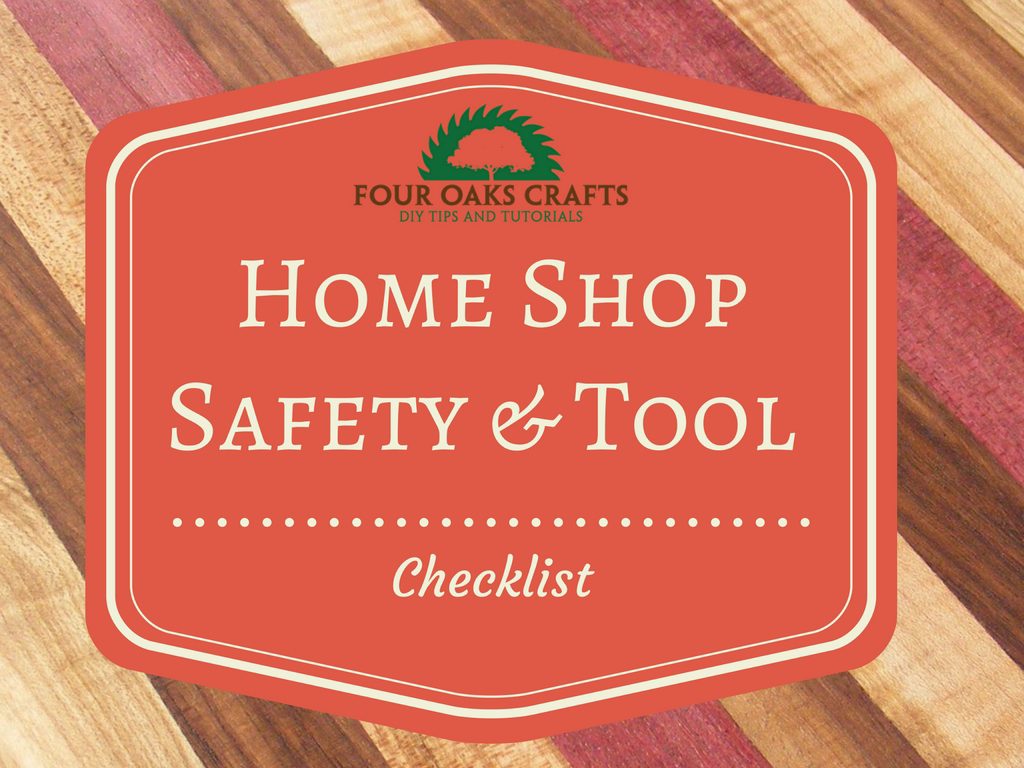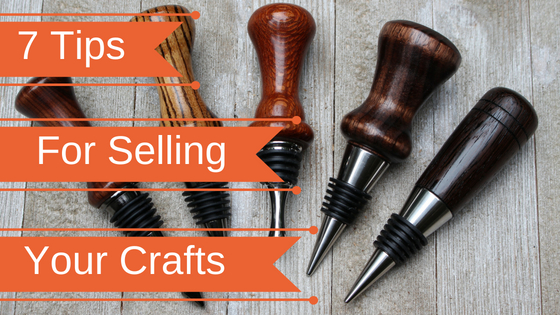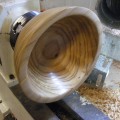Not long after I started making wooden writing pens, I began to wonder: Could I sell these bad boys? The answer — a resounding yes! No, I haven’t quit my day job to sell my crafts, but it’s so rewarding when customers willingly hand me their cash for my handiwork. In this article, I’ll show you 7 tips for selling your crafts.
Is it possible to make a living off your crafts? Yes, but that doesn’t mean you’re going to strike it rich. I encourage you to explore some of my ideas here and get lots of advice along the way. Don’t read this article and immediately quit your day job. If you get serious about selling your crafts, you’ll want to seek some professional financial advice to do it right.
Below, I’ve put together 7 tips for selling your crafts that should help you get started. If you’d like a more comprehensive list of tips, then check out my epic post: Make Money on the Side with Woodworking Crafts.
Now … On to the 7 tips:
1. Attend and sell at craft fairs.
This requires a time commitment, because you’ll need to attend quite a few craft fairs to make a living this way. If you’re going for some supplemental cash, then maybe not so much. You’ll need to account for expenses like: travel, overnight stays, gas, and cost of having a booth. You’ll also need to have a decent inventory and a variety of items to sell. You’ll want items on the high end to sell and items on the low end.
2. Sell your crafts online.
Etsy is a very popular marketplace for selling crafts online. You set up a store-front page on the Etsy site and Etsy get’s a small percentage of what you sell. There are other online outlets similar to Etsy. Ebay may be another option.You’ll probably need to look into getting a PayPal account or something similar, if you and your customers do transactions with credit cards. I have read enough to know that Etsy has some great articles and forums to help you get started.
3. Know your customers and know what types of crafts they like.
I’ve attended enough craft fairs to realize women are a big segment of craft-buying customers. Largely, they are looking for ideas and searching for great home decor crafts. Gift buying is also on peoples’ minds when they come to craft fairs. The appeal is finding unique, one-of-a-kind type gifts.
Understand that people also buy crafts because they like the personal connection with the crafter. So don’t be shy in telling your story and being as helpful and friendly as possible.
4. Spend time observing what’s happening in the market place.
Listen to what your customer wants, rather than trying to convince them on all the features of your product. Customers will often reveal a lot, if we just focus on what they are saying. Craft-buying is a seasonal thing as well. If you’ll notice, many craft fairs are held strategically before special days and holidays: Mother’s Day and Christmas are just two examples.
5. Sell to your niche.
Don’t think you should sell crafts that fall into a bunch of categories. Pick one or a few you like and concentrate on the customers who like the items you make. You need to enjoy making your product and you need to be fairly efficient when making it. Once you have figured out these things, you can focus on your particular niche or customer segment. But make sure you decide on a niche that will sell well.
6. Sell evergreen items.
Evergreen items are things folks like to buy over and over again. They are either disposable items or they just appeal to all generations. I’ll admit this means going with the safe side or the tried-and-true. Only downside here is you will be competing with a lot of similar tried-and-true products. Examples here might be wooden spoons or cutting boards. Think about bird houses which are exposed to the elements. You know these type crafts will eventually wear out with time or use.
7. Give them something new or unique.
This is the opposite of tip 6. This means taking some risks and creating unique items no one has seen before. Of course, you still need to consider is it something people would really love. If it doesn’t turn out to be a hit, then cut your losses and move on to newer ideas. It’s rare that your first idea will be your best idea. Keep going though, and you’ll eventually find your sweet-spot idea.
I hope you enjoyed these 7 tips for selling your crafts. If you’d like to get a more comprehensive list of tips, check out my post:
Make Money on the Side with Woodworking Crafts.

Are you starting up a new shop? Want to work safer in your shop? To help you answer these questions I've put together a 2-part checklist -- Home Shop Safety & Tool Checklist.
I will also send you updates of my latest woodworking and DIY projects. You can get all this by subscribing to my free email newsletter.






